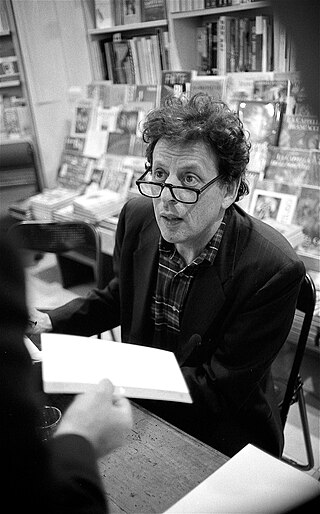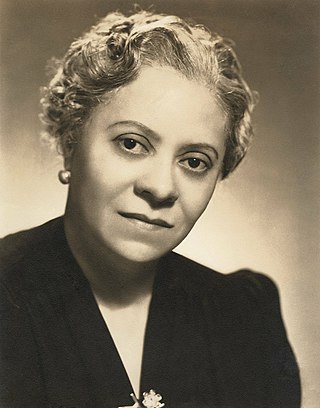
Philip Glass is an American composer and pianist. He is widely regarded as one of the most influential composers of the late 20th century. Glass's work has been associated with minimalism, being built up from repetitive phrases and shifting layers. Glass describes himself as a composer of "music with repetitive structures", which he has helped to evolve stylistically.

A symphony is an extended musical composition in Western classical music, most often for orchestra. Although the term has had many meanings from its origins in the ancient Greek era, by the late 18th century the word had taken on the meaning common today: a work usually consisting of multiple distinct sections or movements, often four, with the first movement in sonata form. Symphonies are almost always scored for an orchestra consisting of a string section, brass, woodwind, and percussion instruments which altogether number about 30 to 100 musicians. Symphonies are notated in a musical score, which contains all the instrument parts. Orchestral musicians play from parts which contain just the notated music for their own instrument. Some symphonies also contain vocal parts.

Sonata, in music, literally means a piece played as opposed to a cantata, a piece sung. The term evolved through the history of music, designating a variety of forms until the Classical era, when it took on increasing importance. Sonata is a vague term, with varying meanings depending on the context and time period. By the early 19th century, it came to represent a principle of composing large-scale works. It was applied to most instrumental genres and regarded—alongside the fugue—as one of two fundamental methods of organizing, interpreting and analyzing concert music. Though the musical style of sonatas has changed since the Classical era, most 20th- and 21st-century sonatas still maintain the same structure.
Sonata form is a musical structure generally consisting of three main sections: an exposition, a development, and a recapitulation. It has been used widely since the middle of the 18th century.

William Grant Still Jr. was an American composer of nearly two hundred works, including five symphonies, four ballets, nine operas, over thirty choral works, art songs, chamber music, and solo works. Born in Mississippi and growing up in Little Rock, Arkansas, Still attended Wilberforce University and Oberlin Conservatory of Music as a student of George Whitefield Chadwick and then Edgard Varèse. Because of his close association and collaboration with prominent African-American literary and cultural figures, Still is considered to be part of the Harlem Renaissance.

Florence Beatrice Price was an American classical composer, pianist, organist and music teacher. Born in Little Rock, Arkansas, Price was educated at the New England Conservatory of Music, and was active in Chicago from 1927 until her death in 1953. Price is noted as the first African-American woman to be recognized as a symphonic composer, and the first to have a composition played by a major orchestra. Price composed over 300 works: four symphonies, four concertos, as well as choral works, art songs, chamber music and music for solo instruments. In 2009, a substantial collection of her works and papers was found in her abandoned summer home.

Afro-American Symphony, also known as Symphony No. 1"Afro-American" and Symphony No. 1 in A-flat major, is a 1930 composition by William Grant Still, the first symphony written by an African American and performed for a United States audience by a leading orchestra. It was premiered in 1931 by the Rochester Philharmonic Orchestra and later published in 1935. It is a symphonic piece for full orchestra, including celeste, harp, and tenor banjo. It combines a fairly traditional symphonic form with blues progressions and rhythms that were characteristic of popular African-American music at the time. This combination expressed Still's integration of black culture into the classical forms. Still used quotes from four poems by early 20th-century African-American poet Paul Laurence Dunbar as epigraphs for each symphonic movement. The symphony is about twenty-four minutes long.

A choral symphony is a musical composition for orchestra, choir, and sometimes solo vocalists that, in its internal workings and overall musical architecture, adheres broadly to symphonic musical form. The term "choral symphony" in this context was coined by Hector Berlioz when he described his Roméo et Juliette as such in his five-paragraph introduction to that work. The direct antecedent for the choral symphony is Ludwig van Beethoven's Ninth Symphony. Beethoven's Ninth incorporates part of the Ode an die Freude, a poem by Friedrich Schiller, with text sung by soloists and chorus in the last movement. It is the first example of a major composer's use of the human voice on the same level as instruments in a symphony.

The Symphony No. 5 in C minor, Op. 67, also known as the Fate Symphony is a symphony composed by Ludwig van Beethoven between 1804 and 1808. It is one of the best-known compositions in classical music and one of the most frequently played symphonies, and it is widely considered one of the cornerstones of western music. First performed in Vienna's Theater an der Wien in 1808, the work achieved its prodigious reputation soon afterward. E. T. A. Hoffmann described the symphony as "one of the most important works of the time". As is typical of symphonies during the Classical period, Beethoven's Fifth Symphony has four movements.

Miss Sally's Party is a 1940 ballet composition in eight-movements by American composer William Grant Still. A related libretto was written by Verna Arvey, wife of composer Still. The ballet was first performed on May 2, 1941, and is about nineteen minutes long.

The Symphony No. 4 in D minor is an orchestral symphony by the American composer Florence Price. Composed in 1945, the work was never performed during Price's life and was presumed lost until it was discovered among a stash of manuscripts in her former summer home outside of St. Anne, Illinois, in 2009. These manuscripts, along with journals, books, and other documents that were discovered, are now preserved at the University of Arkansas. The symphony was given a belated world premiere by the Fort Smith Symphony under the direction of John Jeter in Fort Smith, Arkansas, on May 12, 2018.

Miniature is a musical composition in five movements composed in 1948 by American composer William Grant Still. The composition was originally created for trio and was later, in 1963, arranged for quintet. The composition is about twelve minutes long.

Symphony No. 2 in G minor, also known as Symphony No. 2"Song of a New Race", is a 1937 composition in four movements by American composer William Grant Still. The work was first performed on December 10, 1937, by the Philadelphia Orchestra led by conductor Leopold Stokowski. The symphony is about thirty minutes long.

Symphony No. 4, also known as Symphony No. 4"Autochthonous", is a 1947 composition in four movements by American composer William Grant Still. The work was first performed on March 18, 1951, by the Oklahoma City Symphony Orchestra conducted by Victor Alessandro. The symphony is about twenty-six minutes long.

Symphony No. 5, also known as Symphony No. 5"Western Hemisphere", is a 1945 composition in four movements by American composer William Grant Still. The work was first performed on November 9, 1970 by the Oberlin College Orchestra conducted by Robert Baustian. The symphony is about twenty minutes long.

Sahdji is a 1930 ballet composition in two-movements by American composer William Grant Still. The ballet was first performed in 1931 under the direction of Howard Hanson at the Eastman School of Music. The work is about twenty minutes long.

La Guiablesse is a 1927 ballet composition in nine-movements by American composer William Grant Still. The ballet was first performed in 1933 by Howard Hanson and Thelma Biracree at the Eastman School of Music in Rochester, New York, and Ruth Page in Chicago, Illinois. The work is about nineteen minutes long.

Africa is a 1930 symphonic poem in three movements by American composer William Grant Still. The work, originally scored for chamber orchestra, was first performed in 1930 by French flautist Georges Barrère and, in a full orchestra version, by Howard Hanson on October 24, 1930, at the Eastman School of Music in Rochester, New York. The work is about twenty-eight minutes long.

Darker America is a 1924 symphonic poem by American composer William Grant Still. The composition, exploring themes of sorrow, hope, and prayer, is a work derived from Still's studies with the modernist composer Edgard Varèse. In the work, Still uses "melodic types found in African American music such as the descending melodic curve, the pentatonic scale of the spirituals, and the 'blues scales' of the blues. The primary harmonies used were the tonic, subdominant, and dominant harmony of the spirituals." The work was first performed by Eugene Goossens on November 22, 1926 at the Aeolian Hall in New York City, New York and is about twelve minutes long.

Kaintuck' (Kentucky) is a 1935 symphonic poem for piano and orchestra by American composer William Grant Still.







